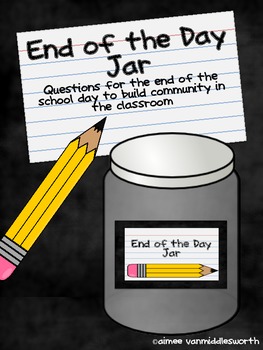 |
| Reflecting on Our Day |
Here is something I found on Teacher Pay Teachers that I started using with my class. The End of the Day Jar is a great way to finish up the day with community circle. Have students join you at your group space. You can pull out a card or have a student read the card. There are several ways to respond. You can call on students, have the student that chose the card respond or have students buddy talk and share.
Here is sample of some of the questions that are found in the jar:
- What is one thing you learned today?
- Did you do something kind for someone else today?
- Did anyone do something nice for you today?
- Did you give your best effort on your work today? Why or why not?
- What are your goals for tomorrow?
- Share something about your day?
- What can you do tomorrow to be a better student?
- Name an adjective that would describe your day.
It is something to try with your class! My kids are loving it! I feel it is a good way to reflect on our day!


